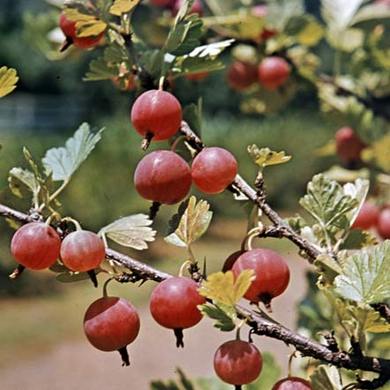Gooseberries (Bareroot) - Planting and Care Guide

Gooseberry plants do best in either open full sun or partially shaded areas, sheltered from frost and strong winds. They prefer a slightly acidic soil, well-draining, free from weeds and fertile.
Planting
Gooseberries should be planted at about 1.2-2m (4-6ft) apart. Preparation of the ground or planting area should be a 60cm x 60cm (2ftx2ft) area at each planting area by digging a hole approximately twice the diameter of the root ball. Line the bottom of the planting hole with fresh compost. Plant with the old soil mark (if visible) or level with the surface. Replace the soil by gently healing it back in and it is a good idea to apply a general-purpose fertiliser- rootgrow - mixed with the soil at this time. Water well. If planting between November and March (bareroot), cut back all branches by half after planting.
Pruning
Pruning should be done between November and March but should not start until 2 years after planting. Remove the branches that may be diseased or weak. As the plant matures, i.e. about 3-4 years old, cut back the new growth produced by the leaders by half. Cut back the side shoots growing from the leaders to approximately 2 inches.
Continuing Care
If the gooseberry plants are not protected by a fruit cage, it will be important to cover them during winter if you want the birds to keep away from damaging the buds. There are times, sue to frost, some plants may have lifted during the winter. Check the plants for this and carefully heal down any that may have lifted. REGULAR WEEDING is important, and hand weeding is recommended but if using a hoe make sure that you do not go too deep which will damage the roots and can lead to suckers being produced. WATERING is also especially important during spells of dry weather. It may be necessary to cover plants at night during flowering period (March / April) when frosts are forecast.
It is also good to use water in a general-purpose fertiliser such as Growmore in March. Apply a mulch after this is done such as compost to keep the soil cook and moist as well as keep down the weeds. If mildew occurs spray with an appropriate fungicide.

